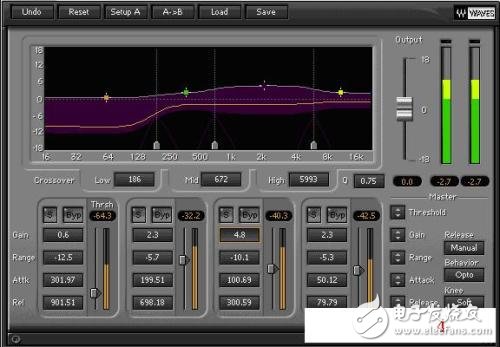Audio Compression Technology: An Overview
 Audio compression is a fundamental technique used to reduce the size of digital audio files without significantly affecting their quality. It involves applying advanced digital signal processing methods to original PCM (Pulse Code Modulation) audio signals, aiming to minimize the data rate while preserving essential information. This process is known as compression coding and requires an inverse process called decompression or decoding to restore the original file.
In the field of audio compression, there are two primary approaches: lossy and lossless compression. Lossy compression, commonly seen in formats like MP3, WMA, and OGG, reduces file size by discarding some data that is considered less perceptible to the human ear. This results in smaller files but may introduce minor distortions or noise. On the other hand, lossless compression retains all original data, allowing for perfect reconstruction of the source file. Formats such as APE, FLAC, and ALAC fall into this category, making them ideal for archiving or high-fidelity applications.
Audio compression is a fundamental technique used to reduce the size of digital audio files without significantly affecting their quality. It involves applying advanced digital signal processing methods to original PCM (Pulse Code Modulation) audio signals, aiming to minimize the data rate while preserving essential information. This process is known as compression coding and requires an inverse process called decompression or decoding to restore the original file.
In the field of audio compression, there are two primary approaches: lossy and lossless compression. Lossy compression, commonly seen in formats like MP3, WMA, and OGG, reduces file size by discarding some data that is considered less perceptible to the human ear. This results in smaller files but may introduce minor distortions or noise. On the other hand, lossless compression retains all original data, allowing for perfect reconstruction of the source file. Formats such as APE, FLAC, and ALAC fall into this category, making them ideal for archiving or high-fidelity applications.
 **Key Features of Digital Audio**
The quality of digital audio is determined by two main factors: sampling frequency and quantization bit depth. Higher sampling rates capture more details over time, while higher bit depths allow for finer amplitude resolution. However, these improvements come at the cost of increased data volume, which places significant demands on storage and transmission capabilities.
For example, a standard stereo audio signal with a sampling rate of 44.1 kHz, 16-bit depth, and two channels produces a data rate of approximately 1.4 Mbps, equivalent to about 176 KB per second. This volume can quickly become impractical for streaming or storage, especially for long audio files.
To address this, audio compression techniques aim to reduce the data size while maintaining acceptable sound quality. This is achieved by identifying and removing redundant or less perceptible components from the audio signal.
**Types of Redundancy in Audio Signals**
There are three main types of redundancy that audio compression techniques exploit:
1. **Time Domain Redundancy**
- Non-uniform amplitude distribution: Some parts of the signal have low amplitude, leading to unused bits.
- Sample correlation: Adjacent samples are often similar, reducing the need for full representation.
- Periodic correlation: Certain patterns repeat over time, allowing for efficient encoding.
- Long-term self-correlation: Over longer intervals, the signal remains relatively stable.
- Silence: Pauses in the audio can be removed or compressed to save space.
2. **Frequency Domain Redundancy**
- Power spectral density variations: Low-frequency components often dominate, creating opportunities for optimization.
- Speech-specific characteristics: In voice signals, certain frequencies carry more energy, while others are less important.
3. **Auditory Redundancy**
Based on psychoacoustic models, this type of redundancy considers what the human ear can actually perceive. By understanding the limitations of human hearing, compression algorithms can eliminate sounds that are unlikely to be noticed, further reducing file size without compromising perceived quality.
By leveraging these redundancies, audio compression technologies enable efficient storage and transmission of high-quality audio, making it possible to enjoy rich sound experiences even with limited bandwidth or storage capacity.
**Key Features of Digital Audio**
The quality of digital audio is determined by two main factors: sampling frequency and quantization bit depth. Higher sampling rates capture more details over time, while higher bit depths allow for finer amplitude resolution. However, these improvements come at the cost of increased data volume, which places significant demands on storage and transmission capabilities.
For example, a standard stereo audio signal with a sampling rate of 44.1 kHz, 16-bit depth, and two channels produces a data rate of approximately 1.4 Mbps, equivalent to about 176 KB per second. This volume can quickly become impractical for streaming or storage, especially for long audio files.
To address this, audio compression techniques aim to reduce the data size while maintaining acceptable sound quality. This is achieved by identifying and removing redundant or less perceptible components from the audio signal.
**Types of Redundancy in Audio Signals**
There are three main types of redundancy that audio compression techniques exploit:
1. **Time Domain Redundancy**
- Non-uniform amplitude distribution: Some parts of the signal have low amplitude, leading to unused bits.
- Sample correlation: Adjacent samples are often similar, reducing the need for full representation.
- Periodic correlation: Certain patterns repeat over time, allowing for efficient encoding.
- Long-term self-correlation: Over longer intervals, the signal remains relatively stable.
- Silence: Pauses in the audio can be removed or compressed to save space.
2. **Frequency Domain Redundancy**
- Power spectral density variations: Low-frequency components often dominate, creating opportunities for optimization.
- Speech-specific characteristics: In voice signals, certain frequencies carry more energy, while others are less important.
3. **Auditory Redundancy**
Based on psychoacoustic models, this type of redundancy considers what the human ear can actually perceive. By understanding the limitations of human hearing, compression algorithms can eliminate sounds that are unlikely to be noticed, further reducing file size without compromising perceived quality.
By leveraging these redundancies, audio compression technologies enable efficient storage and transmission of high-quality audio, making it possible to enjoy rich sound experiences even with limited bandwidth or storage capacity.


Solar Mounting System,Solar Water Panel Stand,solar panel metal ground mount,ground mounted solar
Hebei Jinbiao Construction Materials Tech Corp., Ltd. , https://www.pvcarportsystem.com